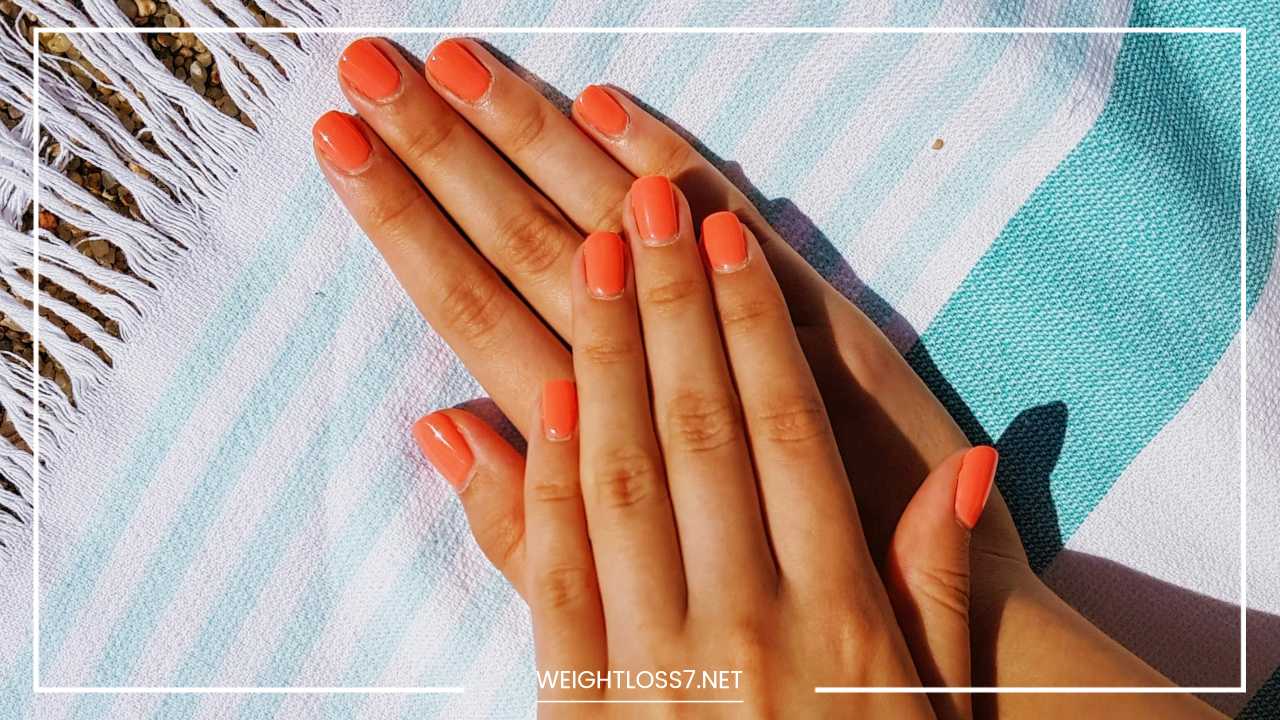Summer Skin Care Guide: Glow All Season Long

Summer Skin Care
Summer Skin Care: Your Guide to a Glowing, Healthy Season
Summer’s here! It’s a time for sunshine, vacations, and enjoying the outdoors. But the hotter temperatures and increased sun exposure can also take a toll on your skin.
Don’t let summer leave you with breakouts, dryness, or sunburn. With a few adjustments to your routine, you can keep your skin healthy, hydrated, and glowing all season long.
This comprehensive blog post is your one-stop guide to summer skincare. We’ll delve deeper into each aspect, providing detailed information and practical tips.
From sun protection essentials to managing oily skin, keeping your complexion hydrated, and even addressing common summer skin concerns, we’ve got you covered.
Sun Protection: The Bedrock of Summer Skincare
Sun protection is the cornerstone of any good summer skincare routine. The sun’s ultraviolet (UV) rays damage skin cells, leading to premature aging, wrinkles, and even skin cancer. Here’s what you need to know about sun protection:
- Sunscreen: Apply a broad-spectrum sunscreen with SPF 30 or higher every single day, even on cloudy days. Reapplication is crucial – aim for every two hours, or more often if you’re sweating or swimming.
- Decoding SPF: Sun Protection Factor (SPF) indicates how well a sunscreen protects against UVB rays, the primary culprit behind sunburn. While SPF 30 is a good minimum, consider SPF 50+ for extended sun exposure or if you have fair skin. Here’s a breakdown of SPF effectiveness:
- SPF 15: Blocks about 93% of UVB rays
- SPF 30: Blocks about 97% of UVB rays
- SPF 50: Blocks about 98% of UVB rays
- Broad Spectrum is Best: Look for sunscreens labeled “broad spectrum” to protect against both UVA and UVB rays. UVA rays penetrate deeper into the skin and contribute to wrinkles and age spots.
- Water Resistance Explained: If you’ll be sweating or swimming, choose a water-resistant sunscreen. However, remember – even water-resistant formulas need to be reapplied after swimming or excessive sweating. Here’s a guide to water resistance ratings:
- 40 minutes of water resistance
- 80 minutes of water resistance
Sunscreen Application: Mastering the Technique
Sunscreen application is just as important as choosing the right formula. Here are some tips for optimal protection:
- Apply Generously: Don’t skimp! Apply sunscreen generously to all exposed skin, including your face, ears, neck, lips, tops of your feet, and even your scalp if you have thinning hair.
- Don’t Forget Hidden Areas: Areas like your shoulders, chest, and hands are often neglected. Pay close attention to these spots during application.
- Lip Protection is Crucial: Use a lip balm with SPF protection to prevent sunburn on your lips. Look for a lip balm with SPF 30 or higher.
Beyond Sunscreen: Sun Protection Strategies for a Multi-Layered Defense
Sunscreen is crucial, but it’s not the only way to protect your skin in summer. Here are some additional sun protection strategies to create a multi-layered defense:
- Seek Shade: During peak sun hours (usually 10 am to 4 pm), try to stay in the shade whenever possible. Relax under an umbrella at the beach or seek out shady spots while hiking.
- Sun-Protective Clothing: Wear lightweight, long-sleeved shirts, pants, and wide-brimmed hats whenever possible. Look for clothes with a Ultraviolet Protection Factor (UPF) rating. UPF indicates how well the fabric shields you from UV rays. Opt for fabrics with a UPF rating of 50+ for maximum protection.
- Sunglasses for Eye Protection: Protect your eyes from UV rays with sunglasses that block UVA and UVB rays. Look for sunglasses that meet UV protection standards set by organizations like the American Academy of Ophthalmology.
Summer Skincare for Different Skin Types: Tailoring Your Routine
Summer weather can affect different skin types in various ways. Here’s how to adjust your routine for optimal results:
Oily Skin:
- Cleansing: In the summer, oily skin might experience increased oil production. To combat this, use a gentle, oil-free cleanser twice a day. Look for cleansers containing salicylic acid or glycolic acid, which help regulate oil production without stripping the skin of its natural moisture barrier.
- Moisturization: Opt for lightweight, water-based moisturizers that are labeled “non-comedogenic” (which won’t clog pores). Consider gel-based moisturizers for a refreshing feel.
- Exfoliation: Exfoliate 1-2 times per week with a gentle chemical exfoliant like AHAs (alpha hydroxy acids) or BHAs (beta hydroxy acids) to remove dead skin cells and prevent clogged pores. Avoid harsh scrubs that can irritate the skin.
- Clay Masks: Use clay masks once or twice a week to absorb excess oil and minimize shine. Look for masks formulated with kaolin clay or bentonite clay, known for their oil-absorbing properties.
Dry Skin:
- Cleansing: Use a hydrating cleanser that removes impurities without stripping the skin of its natural oils. Look for cleansers containing hyaluronic acid or ceramides, which help attract and retain moisture.
- Moisturization: Choose a richer moisturizer formulated for dry skin. Look for ingredients like ceramides, hyaluronic acid, and glycerin, which help lock in moisture and keep the skin hydrated. Consider applying a hydrating facial oil on top of your moisturizer for an extra boost of moisture.
- Humectants: Incorporate humectants like hyaluronic acid into your routine. Humectants draw moisture from the air into the skin, keeping it plump and hydrated.
- Limit Exfoliation: Exfoliate once a week with a gentle, hydrating scrub to remove dead skin cells without further drying out the skin.
Combination Skin:
- Cleansing: Use a gentle cleanser suitable for both oily and dry zones. Look for cleansers labeled “combination skin” or “balancing.”
- Moisturization: Apply a lightweight, oil-free moisturizer to oily areas and a richer moisturizer to dry areas. You can also use a single moisturizer formulated for combination skin.
- Targeted Treatments: Use spot treatments containing salicylic acid for oily areas and hydrating serums with hyaluronic acid for dry areas.
Sensitive Skin:
- Gentle is Key: Use fragrance-free, hypoallergenic products formulated for sensitive skin. Avoid harsh chemicals, perfumes, and alcohol, which can irritate sensitive skin.
- Patch Testing: Before using any new product, perform a patch test on a small area of your inner arm. Wait 24 hours to see if there’s any reaction before applying the product to your face.
- Mineral Sunscreens: Opt for mineral sunscreens containing zinc oxide or titanium dioxide, which tend to be gentler on sensitive skin.
- Minimize Exfoliation: Limit exfoliation to once a week using a very gentle physical or chemical exfoliant.
Hydration: The Secret Weapon for Summer Skin
Summer heat can lead to dehydration, which shows on your skin as dullness, dryness, and fine lines. Here’s how to stay hydrated for healthy summer skin:
- Drink Plenty of Water: Aim for eight glasses of water per day, or more if you’re sweating heavily due to exercise or hot weather. Monitor your urine color – it should be pale yellow or clear. Darker urine indicates dehydration.
- Electrolyte Replenishment: Consider electrolyte-infused drinks or adding a pinch of salt to your water, especially if you’re sweating a lot. Electrolytes help your body retain fluids and function properly.
- Water-Rich Foods: Incorporate plenty of fruits and vegetables like watermelon, cucumber, celery, and leafy greens into your diet. These foods are high in water content and provide essential vitamins and minerals for healthy skin.
- Hydrating Skincare Products: Use a hydrating cleanser, moisturizer, and facial mist to keep your skin plump and supple. Look for ingredients like hyaluronic acid, glycerin, and aloe vera, known for their hydrating properties.
Diet and Lifestyle for Healthy Summer Skin
What you eat and how you live can significantly impact your skin’s health. Here are some tips for promoting healthy summer skin from the inside out:
- Healthy Diet: Eat a balanced diet rich in fruits, vegetables, whole grains, and lean protein. These foods provide essential nutrients that nourish your skin and keep it healthy.
- Limit Processed Foods: Processed foods often contain high amounts of sugar, unhealthy fats, and sodium, which can contribute to inflammation and breakouts.
- Manage Stress: Chronic stress can worsen skin conditions like acne and eczema. Practice stress-management techniques like yoga, meditation, or deep breathing to keep your stress levels in check.
- Quality Sleep: Aim for 7-8 hours of quality sleep each night. Sleep allows your skin to repair and regenerate itself.
Addressing Common Summer Skin Concerns
Summer brings its own set of skin concerns. Here’s how to tackle some of the most common ones:
- Sunburn: If you get a sunburn, apply cool compresses to soothe the pain. Use a fragrance-free, aloe vera-based moisturizer to help with healing. Avoid picking at sunburned skin, as this can lead to scarring.
- Sweat-Induced Breakouts: Sweat can clog pores and lead to breakouts. Shower after sweating heavily to remove sweat and dirt from your skin. Use a gentle cleanser to remove any residual sweat and oil. Consider using a toner with salicylic acid to help keep pores clear. Avoid touching your face throughout the day, as this can transfer bacteria and worsen breakouts.
-
Heat Rash: Heat rash appears as small, red, itchy bumps on the skin. To treat heat rash, wear loose, breathable clothing and stay in air conditioning as much as possible. Apply a cool compress to the affected area and use calamine lotion to soothe itching.
-
Dry, Flaky Skin: If your skin feels dry and flaky, use a richer moisturizer and incorporate hydrating serums into your routine. Apply a hydrating face mask a couple of times a week for an extra boost of moisture. Exfoliate gently to remove dead skin cells and allow your moisturizer to penetrate deeper.
-
Insect Bites: Insect bites can be itchy and irritating. Apply a calamine lotion or hydrocortisone cream to the affected area to reduce itching and inflammation. Avoid scratching the bites, as this can lead to infection.
Summer Skincare Must-Haves: Products to Stock Up On
- Broad-spectrum sunscreen with SPF 30 or higher
- Oil-free cleanser (for oily skin) or hydrating cleanser (for dry skin)
- Lightweight, oil-free moisturizer (for oily skin) or richer moisturizer (for dry skin)
- Hydrating facial mist
- Lip balm with SPF 30 or higher
- Gentle exfoliant (chemical or physical) (use according to your skin type)
- Clay mask (for oily skin) (use once or twice a week)
- Hydrating serum (for dry skin)
- Aloe vera gel (for sunburn relief)
- Calamine lotion (for heat rash and insect bites)
Summer Skincare Routine: A Sample Schedule
Morning:
- Cleanse your face with a gentle cleanser.
- Apply a hydrating toner (optional).
- Apply a lightweight, oil-free moisturizer with SPF 30 or higher.
- Apply lip balm with SPF 30 or higher.
Mid-day (if needed):
- Reapply sunscreen every two hours, or more often if sweating or swimming.
- Use a hydrating facial mist to refresh your skin.
Evening:
- Remove makeup with a gentle makeup remover.
- Cleanse your face with a gentle cleanser.
- Exfoliate your skin 1-2 times per week (depending on your skin type).
- Apply a hydrating serum (optional, for dry skin).
- Apply a richer moisturizer.
Remember, this is just a sample schedule. You can adjust it based on your individual skin type and needs.
Final Word: Embrace a Summer Glow with Healthy Habits
Summer doesn’t have to mean sacrificing your skin health. By following these tips and incorporating a consistent skincare routine, you can keep your skin healthy, hydrated, and glowing all season long. Remember, sun protection is crucial, so prioritize sunscreen use and seek shade during peak sun hours.
Tailor your routine to your skin type and address any specific concerns that arise. By making healthy choices and taking care of your skin from the inside out, you can embrace a radiant, summery glow with confidence.

















